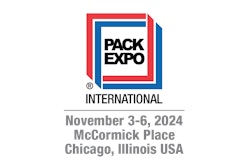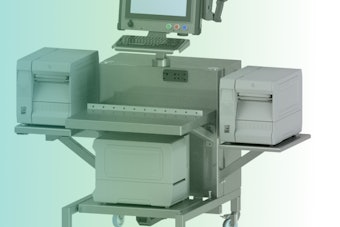
Three Takeaways
1. Sterilization packaging plays a unique role, and should not be lumped in with food or CPG packaging regulations.
2. The SPMC (Sterilization Packaging Manufacturers Council) formed a new Regulatory Standards Sustainability Committee, focusing on environmental policy and regulations, and will release a new position paper geared toward lawmakers around Summer 2024.
3. Their first focus is on bills that may require recycled content in packaging and recyclability requirements in packaging, as well as bolstering advanced recycling understanding.
Well-meaning but impractical packaging legislation can lead to serious unintended consequences, including products being taken off the market and shortages impacting patient safety.
In a far less harrowing policy example, I’ve seen a similar phenomenon myself when I worked in process safety earlier in my career. When a major federal department put forth legislation that required companies to report on certain chemicals they were storing, there were some conflicts between threshold amounts for various chemical mixtures and their individual components. Worried farmers were calling in each week to ask which way they should file, and I spent many days calling in and hours on hold with the agency trying to sort things out.
Getting back to packaging, at MD&M West, Nick Packet, former Tyvek healthcare industry vertical manager at DuPont Tyvek Healthcare Packaging, and newly technical director at Beacon Converters, shared details on the SPMC’s upcoming position paper, part of its effort to educate policymakers on the importance of sterilization packaging and the critical role it plays in delivering life-saving medical devices around the globe.
Position paper
The SPMC Regulatory Standards Sustainability Committee is a new committee focusing on environmental policy and regulations.
Part of their work is to educate policymakers and legislators on the importance of sterile packaging. “We're monitoring and advocating for environmental legislation that protects patient safety. We want to improve the knowledge of policymakers around the understanding of sterile packaging, and not have someone think about packaging as just packaging,” said Packet. “They see a lot of food and consumer packaging. But a lot of people don't really see sterile packaging.”
Much of the SPMC’s work has been geared toward the audience of medical device manufacturers (MDMs), converters, and users of sterile packaging, so the efforts represent a shift to legislators and policymakers. The group is driving awareness among those making laws and regulations around environmental requirements at the state and federal level. “We want to highlight the critical role that sterilization packaging plays in the delivery of safe and sterile medical devices, and healthcare products around the U.S., but also around the globe, and share the potential risks and unintended consequences that could be caused by, in essence, ill-suited policy or legislation that hasn’t been well thought out. So this is an opportunity for us to educate,” he said.
The committee is at work on the work product, estimated to release in Summer 2024.
Packet noted that consequences of ill-formed laws can be impactful. The team is seeing a lot of environmental legislation activity around packaging and plastics at the state level, so this an area of particular focus.
Recycled content and recyclability
The group has two focus areas to start:
1. Bills that may require recycled content in packaging: They are seeking to avoid sterile packaging getting lumped into the broader packaging market. “We'll lean on the regulations and consensus standards that restrict recycled content from being included in these in these packages, as well as highlight the risks that are potentially introduced. You might have compatibility risk. If you have recycled content, you don't necessarily know what's contained within that recycling stream. A requirement of ISO 11607 and 21CFR820 is that you need to have traceability of where your components or your materials are coming from,” he said.
That kind of traceability for post-consumer recycled content is a challenge at this point with the current mechanical recycling infrastructure. “Then that can impact package performance—you don't necessarily know how these materials are going to perform. You know that plastics are degraded as they continue to go through a mechanical recycling process,” he noted. “Medical device manufacturers and converters have high expectations of these packages and what they need to do. So that's all put at risk with any type of legislation that requires recycled content to be incorporated into sterilization packaging.”
2. Recyclability requirements in regulations: Packet explained, “I think the industry in general wants to move in this direction and design packaging that can be recyclable. But there are a lot of limitations currently with the mechanical recycling technologies that are out there. For the most part, mechanical recyclers are looking for clean streams of one type of polymer to put through their recycling process. In addition to this, it's often a single form—you want all rigid materials or you want all flexible materials if you have recyclers willing to take flexible materials…which isn't typically a common practice.”
MDMs have to consider the environmental protection and packaging performance that’s needed to protect the product from the point of manufacture through shipping and handling and all the way to the point of use. Sterile packaging is a mix of different polymers that come together to meet device protection requirements. “Because we're relying on these materials in these different forms, it creates challenges for mechanical recyclers to take these materials. These types of requirements could introduce some pretty significant risks,” he added. “A mandate that would require all these packages to be made from one form of flexible or rigid, or one type of polymer—it presents a pretty significant risk to the market.”
Advanced recycling
Lastly, the position paper seeks to encourage policymakers to consider advanced recycling technologies as acceptable recycling technologies.
Packet said that in a lot of draft policies, advanced recycling technologies are not being considered or recognized. Many of those bills have not passed. “I think the SPMC as well as the broader healthcare industry is starting to look at these recycling technologies as an opportunity to enable circularity in our market, because mechanical recycling—at least right now—doesn't give us that. It's not a technology that enables us to drive circularity in our space.”  From left: Henk Blom, PAXXUS; Todd McDonald, Technipaq; and Nick Packet, Beacon Converters.
From left: Henk Blom, PAXXUS; Todd McDonald, Technipaq; and Nick Packet, Beacon Converters.
Advanced recycling, however, offers promise as an opportunity to incorporate materials that come out of these processes as feedstocks upstream in the polymer-making process. “It creates an avenue or an opportunity for circularity in the space. In addition to this, the technologies themselves, no pun intended, are pretty flexible,” said Packet. “They can take a pretty wide range of materials. They create an opportunity where healthcare plastics could be recycled more readily than they are with current mechanical recycling processes. So, we want policymakers to consider and look at advanced recycling technologies as true recycling technologies in the space.”
A look abroad…
The SPMC is focused on regulations in the U.S. The first hurdle is making sure the information gets in front of legislators, said Packet. But looking at soon-to-be-finalized Packaging and Packaging Waste Regulation in Europe offers an example of how regulations are unfolding elsewhere. “There is the exemption of having to include recycled content [for healthcare], but there is the requirement for that material to be recyclable down the road,” said Packet.
Henk Blom highlighted that the EU-based Sterile Barrier Association is very aware of the PPWR. “In fact, the exemptions or carveouts for medical packaging for 2034 are due largely in part to their work, as well as Medtech Europe. The initial draft that we saw had carveouts for pharma, but it didn't recognize that a lot of the same requirements are there for medical devices. So basically, this draft recognizes that not all packaging is the same.”
When asked how this fits with the KIIP Group’s efforts to remove barriers to using advanced recycled materials, Packet noted that the SPMC’s work is essentially in parallel with new efforts from the KIIP group, led by Nathan Vanderschaaf, to gain wider acceptance of advanced recycled material into sterilization packaging. (Editor’s note: Stay tuned for news on these efforts.)
While the efforts are not directly complimentary to each other, there may be opportunity for further collaboration between the groups. “Our work is asking for policymakers to recognize that advanced recycling is really a recycling technology. That's where that mesh comes together,” he said.
![Alison Bryant, senior consultant at Antea Group and communications director for the Healthcare Plastics Recycling Council (HPRC), addressed the crowd at the[PACK]out.](https://img.healthcarepackaging.com/files/base/pmmi/all/image/2024/05/Alison_Bryant.6644005a513b0.png?auto=format%2Ccompress&fit=crop&h=167&q=70&w=250)
















